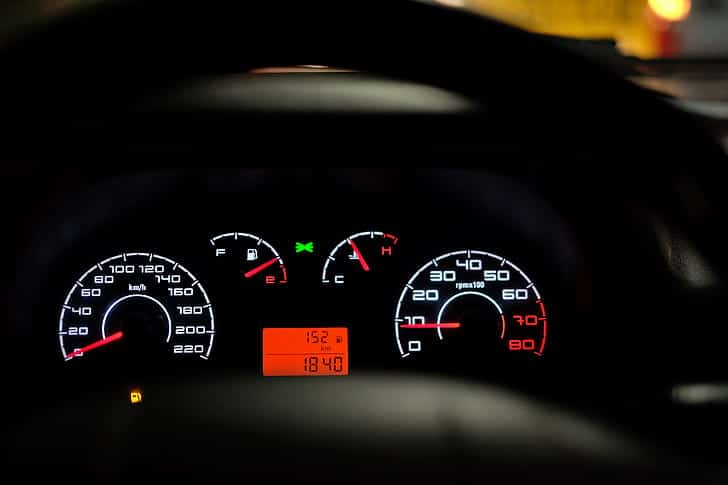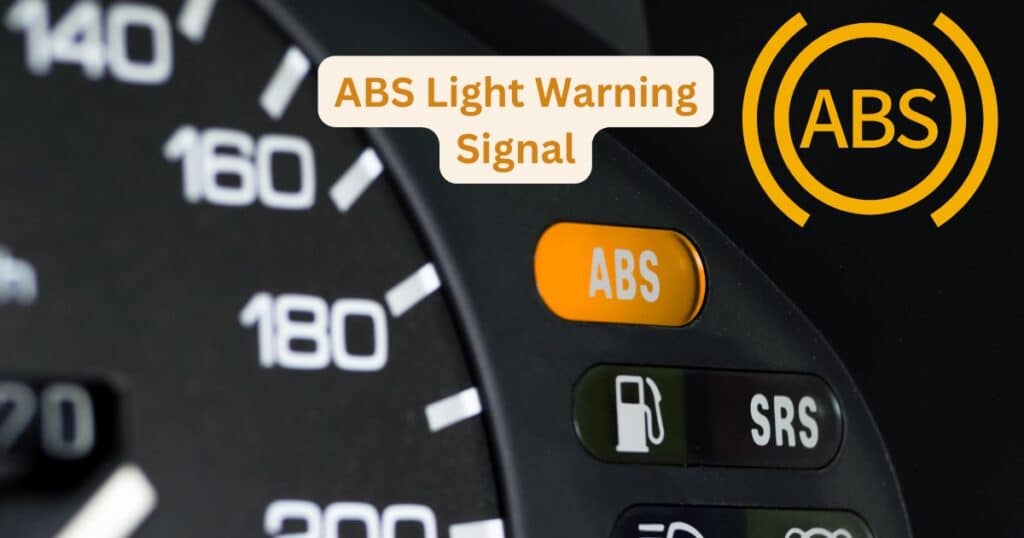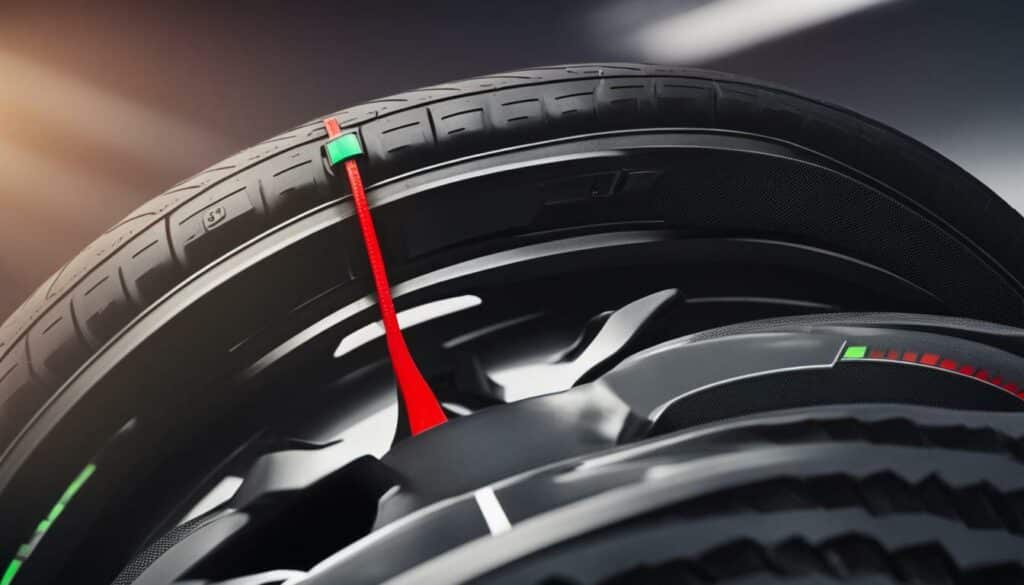An anti-lock brake system (ABS) is designed to prevent your wheels from locking up during braking, allowing you to maintain control of your vehicle. While the ABS doesn’t stop your car faster, it provides the ability to steer out of accidents and increases the lifespan of various brake-related components. When the ABS light on your dashboard comes on, it indicates a potential issue with your ABS system that needs to be addressed.
What Is an ABS?
An anti-lock brake system (ABS) is a safety feature in modern vehicles that prevents the wheels from locking up when you apply the brakes. This helps to avoid skidding and allows you to maintain control over your vehicle. The ABS system does not stop your car faster than a traditional brake system, but it provides you with the ability to steer out of potential accidents and extends the lifespan of various brake components.
When you apply the brakes in an emergency or during sudden stops, traditional brake systems may cause the wheels to lock up, resulting in skidding and loss of control. However, with the anti-lock brake system, wheel lock-up is prevented, allowing the tires to maintain traction with the road surface.
ABS enables drivers to remain in control of their vehicles during emergency braking situations, enhancing safety on the road.
By rapidly modulating brake pressure to individual wheels, ABS prevents the wheels from completely locking up. This allows the driver to retain control over the vehicle, even when braking hard or on slippery surfaces. The system automatically adjusts the brake pressure to optimize braking effectiveness and reduce stopping distances.
The anti-lock brake system is comprised of several components, including wheel speed sensors, hydraulic pump, valves, and an electronic control unit (ECU). These components work together to detect wheel speed, apply and release brake pressure, and ensure proper functioning of the ABS system.
How does ABS work?
When you apply the brakes, the wheel speed sensors detect the rotation speed of each wheel. If the sensor detects a wheel about to lock up, it signals the ECU to modulate the brake pressure for that particular wheel. The hydraulic pump then adjusts the brake pressure by releasing and reapplying the brakes rapidly.
This cycle of releasing and reapplying brake pressure happens several times per second, and it allows the wheel to continue rotating while still slowing down the vehicle. This modulation of brake pressure prevents the wheels from locking up and skidding, ensuring that you can maintain control over your vehicle even in panic braking situations.
The ABS system works in conjunction with other safety systems such as traction control and stability control to provide enhanced vehicle stability and safety.
| Benefits of ABS | Drawbacks of ABS |
|---|---|
|
|
Reasons for ABS Light Coming On
When the ABS light on your dashboard illuminates, it is a clear indication that there may be an issue with your anti-lock brake system. Understanding the potential reasons behind this warning light can help you diagnose and address the problem promptly.
“Knowing the common causes of the ABS light coming on can save you time and money on unnecessary repairs.”
There are several common reasons why the ABS light may illuminate, including:
Malfunctioning ABS Module
The ABS module plays a crucial role in the proper functioning of the ABS system. If it malfunctions, it can interfere with the ABS system’s operation. In some vehicles, the ABS module shares components with the traction control system, further complicating the issue. If the ABS module is malfunctioning, it needs to be inspected and repaired by a professional.
Low Fluid Levels
The hydraulic brake system relies on an adequate amount of brake fluid to function properly. If the fluid levels in the brake fluid reservoir are low, it can trigger the ABS light. Low brake fluid levels can affect the operation of the ABS system and compromise your vehicle’s braking performance. Check the fluid levels regularly and ensure they are within the recommended range. If necessary, top up the fluid with the specified type as stated in your vehicle’s owner’s manual.
Broken Wheel Speed Sensors
Wheel speed sensors are responsible for relaying information about wheel rotation to the ABS system. If any of these sensors are broken or malfunctioning, the ABS light may come on. Broken wheel speed sensors can compromise the system’s ability to accurately detect wheel slippage and adjust brake pressure accordingly. If you suspect a broken wheel speed sensor, it is recommended to have it inspected and replaced by a qualified technician.
System Turned Off
Accidentally turning off the ABS system can also trigger the ABS light. Some vehicles allow the driver to manually disable the ABS system, but it is not recommended to drive without ABS functionality. If you have inadvertently turned off the ABS system, consult your vehicle’s manual to learn how to reactivate it and ensure safe driving.
If your ABS light is on, it is important not to ignore it. Addressing the underlying issue promptly can prevent potential safety hazards and further damage to the ABS system.

ABS Warning Light and Brake System Light
The ABS warning light on your dashboard is an important indicator of potential issues with the ABS system in your vehicle. This light specifically alerts you to problems with the ABS system, which is responsible for preventing wheel lock-up during braking. On the other hand, the brake system light focuses on issues related to the braking system itself. Both lights should be taken seriously and addressed promptly to ensure your safety on the road.
When you start your car, the ABS system performs a self-test to ensure proper functionality. If the ABS warning light stays on or flashes, it signifies a problem with the ABS system that requires inspection and potential repair. Similarly, if the brake system light illuminates, it suggests issues with the braking system that need attention.
It’s important to have your vehicle inspected by a professional technician when these lights appear. They have the expertise to diagnose and address the specific problem affecting your ABS or braking system. Ignoring these warning lights can compromise your ability to brake effectively and can increase the risk of accidents.
Is it Safe to Drive with the ABS Light On?
In general, you can still drive with the ABS light on, as your brakes will still function, but without the added benefits of ABS. This means that the wheels may lock up under heavy braking, reducing maneuverability in emergencies. It is important to address the issue promptly to ensure the proper functioning of your ABS system, as it is a crucial safety feature. Driving with both the ABS and brake system lights on indicates a serious problem, and it is not safe to continue driving in such cases.
While you can still drive with the ABS light on, it is important to understand the impact it can have on your vehicle’s performance. The ABS system is designed to improve the maneuverability and braking capability of your vehicle. By preventing the wheels from locking up during braking, ABS enables you to maintain control and steer clear of potential accidents.
When the ABS light is on, it indicates that there may be an issue with the ABS system. Without the functioning ABS, your brakes will still work, but you won’t have the added protection and stability provided by the ABS functionality. This means that under heavy braking, your wheels may lock up, causing your vehicle to skid and reducing your ability to steer out of dangerous situations.
Addressing the ABS light promptly is crucial to ensuring the safety of yourself and others on the road. It is recommended to have your vehicle inspected by a professional to diagnose and resolve the issue causing the ABS light to illuminate. This will help ensure that your ABS system is functioning properly and that you have optimal maneuverability and braking capability.
Benefits of Addressing ABS Issues
By addressing the ABS light and maintaining your ABS system, you can experience several benefits:
- Improved maneuverability: With a properly functioning ABS system, you have better control over your vehicle, especially in emergency situations where sudden evasive maneuvers may be necessary.
- Enhanced braking capability: ABS allows for shorter stopping distances by preventing wheel lock-up, ensuring more effective and controlled braking.
- Extended lifespan of brake components: ABS helps distribute braking forces evenly, reducing wear and tear on brake pads, rotors, and other components, thereby increasing their lifespan.
- Increased safety: ABS is a crucial safety feature that significantly reduces the risk of accidents caused by wheel lock-up and loss of control during braking.
Proper ABS maintenance is essential to ensure the continued functionality of your ABS system. Regular inspections, fluid checks, and servicing by qualified professionals will help identify and address any potential issues, ensuring the optimal performance of your ABS system and maximizing your safety on the road.
| Driving with ABS Light On | Benefits of Addressing ABS Issues |
|---|---|
| No added benefits of ABS | – Improved maneuverability – Enhanced braking capability – Extended lifespan of brake components – Increased safety |
| Possible wheels lock up under heavy braking, reducing maneuverability | |
| Address the issue promptly to ensure proper ABS functionality |
Remember, driving with the ABS light on means you’re missing out on the crucial benefits of ABS functionality. To ensure your safety and the optimal functionality of your vehicle’s brakes, it’s essential to address any ABS issues promptly through professional maintenance and servicing.

Troubleshooting and Resetting the ABS Light
If your ABS light comes on, it is important to address the issue promptly to ensure the proper functioning of your ABS system. Here are some troubleshooting steps and resetting methods you can try:
- Drive carefully and avoid aggressive braking: When the ABS light is on, the ABS system may be compromised. To prevent potential wheel lock-up and improve maneuverability, drive cautiously and avoid sudden or hard braking maneuvers.
- Restart your vehicle: Sometimes, a temporary glitch or sensor error can trigger the ABS light. Turning off your vehicle and then restarting it can reset the system and allow it to recheck for any abnormalities. If the ABS light turns off after the restart, it may have been a minor issue that resolved itself.
- Professional inspection: If the ABS light persists, it is recommended to have your vehicle professionally inspected. A trained technician will use specialized diagnostic equipment to diagnose the problem with the ABS system accurately. This will help identify any faulty components or electrical issues that require repair or replacement.
Attempting to reset the ABS light without addressing the underlying issue may only provide temporary relief. It is crucial to have the ABS system diagnosis performed by a professional to ensure the problem is resolved effectively.
| Troubleshooting Steps | Outcome |
|---|---|
| Drive carefully and avoid aggressive braking | Improved maneuverability and reduced risk of wheel lock-up |
| Restart your vehicle | Possible temporary resolution of minor issues triggering the ABS light |
| Professional inspection | Accurate diagnosis and identification of ABS system problems for effective repair |
Please note: The troubleshooting steps mentioned here are general recommendations. Specific ABS system diagnosis and resetting methods may vary depending on the make, model, and year of your vehicle. It is always best to consult your vehicle’s user manual or seek professional assistance for a precise diagnosis and resolution.
Symptoms of ABS System Malfunction
The symptoms of an ABS system malfunction can vary depending on the specific issue. Here are some common signs to look out for:
- A less responsive brake pedal: If you notice that your brake pedal feels spongy or takes more effort to engage, it could be a sign of an ABS system malfunction.
- The check engine light coming on: In some cases, a malfunctioning ABS module can trigger the check engine light on your dashboard. Be sure to have it checked by a professional.
- Clicking or cracking sounds when braking: Unusual noises, such as clicking or cracking sounds, can indicate a problem with the ABS module or other components.
- Brakes locking up during regular driving: If your brakes suddenly lock up while driving, it could be a sign of ABS module issues or speed sensor malfunctions.
In addition to these symptoms, other issues can also point to specific ABS system problems:
- Low brake fluid symptoms: When the brake fluid levels are low, you may experience less responsive brakes and hear scraping or grinding sounds during braking.
- Broken speed sensor symptoms: A malfunctioning speed sensor can cause the traction control light to illuminate, longer stopping distances, and a loss of control or traction while braking.
It’s important to address any of these symptoms promptly to ensure the optimal performance and safety of your ABS system.
Importance of ABS Maintenance and Service
Proper ABS maintenance and service are crucial for ensuring the safety and functionality of your vehicle. The ABS system is an important safety feature that helps maintain vehicle control and improves stopping distances. Regular brake system inspections and maintenance, including checking brake fluid levels and the condition of components such as the ABS module and speed sensors, can help prevent ABS system malfunctions and ensure optimal performance.
Regular maintenance of your ABS system is essential for several reasons:
- Enhanced Safety: The ABS system is designed to enhance your vehicle’s safety by preventing wheel lock-up and maintaining vehicle control during braking. By keeping the ABS system well-maintained, you ensure that it functions properly when you need it the most, particularly in emergency situations.
- Improved Stopping Distances: An optimally functioning ABS system allows for shorter stopping distances by preventing wheel lock-up. This helps you maintain better control over your vehicle and reduces the risk of accidents.
- Extended Component Lifespan: Regular maintenance and inspections of the ABS system help identify and address any issues that might arise. By identifying and rectifying problems early on, you can extend the lifespan of various brake-related components, such as the ABS module and speed sensors, preventing costly repairs or replacements down the line.
Brake System Inspection Checklist
When it comes to ABS maintenance, it’s essential to conduct routine brake system inspections to ensure everything is in proper working order. Here’s a checklist of key components to inspect:
| Component | Inspection |
|---|---|
| Brake Fluid | Check the brake fluid level and condition. Low fluid levels can affect the proper functioning of the ABS system. |
| Brake Pads | Inspect the brake pads for wear and tear. Worn-out brake pads can compromise braking performance and put stress on the ABS system. |
| Brake Rotors | Check the condition of the brake rotors for any signs of damage or warping. Damaged rotors can cause uneven braking and affect ABS functionality. |
| ABS Module | Ensure the ABS module is functioning correctly. Any issues with the module can result in ABS system malfunctions. |
| Speed Sensors | Inspect the speed sensors to ensure they are clean and functioning properly. Faulty speed sensors can disrupt the communication between the wheels and the ABS system. |
A properly conducted brake system inspection can help identify potential problems and allow for timely repairs, preventing ABS system malfunctions and ensuring safe vehicle operation.
By prioritizing ABS maintenance and service, you take an active role in ensuring the safety and performance of your vehicle. Regular inspections, fluid checks, and addressing any identified issues promptly will optimize the functioning of your ABS system and provide you with peace of mind on the road.
ABS Light in Lexus Vehicles
Lexus vehicles are equipped with an advanced ABS system, underscoring the brand’s commitment to car safety. This system, known as the Anti-lock Brake System, is designed to enhance the overall safety and control of your Lexus vehicle.
When the ABS warning light illuminates on your Lexus dashboard, it signifies a potential issue with the ABS system. It is important not to neglect this warning, as it could impact the performance and safety of your vehicle, especially during braking maneuvers.
Driving with the ABS warning light or check engine light on is not advisable, as it may indicate serious problems that require attention. In such instances, seeking professional inspection and repairs at a Lexus service center is highly recommended to ensure the optimal functionality of your ABS system.
Car safety should always be a priority, and addressing any ABS-related concerns promptly is crucial to maintaining the integrity and performance of your Lexus vehicle. Trusting the expertise of certified Lexus technicians will ensure accurate diagnosis and appropriate repairs, ultimately providing you with peace of mind on the road.
Conclusion
The ABS light is a crucial warning signal that should never be overlooked. Understanding how the ABS system functions, identifying potential causes for the ABS light illuminating, and realizing the significance of prompt inspection and repairs are essential for preserving the safety and dependability of your vehicle. When you observe the ABS light on your dashboard, it is highly recommended to arrange for a proficient inspection by a certified professional to accurately diagnose and effectively resolve any concerns with your ABS system.
By addressing ABS issues promptly, you can ensure the proper operation of your anti-lock brake system, which plays a vital role in preventing wheel lock-up and maintaining control of your vehicle. Neglecting ABS system malfunctions can jeopardize your ability to maneuver safely during emergencies and compromise the overall braking effectiveness. Thus, prioritizing ABS maintenance and promptly addressing ABS issues is crucial for vehicle safety and optimal performance.
Remember, the ABS light is your vehicle’s way of alerting you to potential problems with the ABS system. By taking action and seeking professional assistance, you can ensure the continued functionality and reliability of this important safety feature. Don’t ignore the ABS light – it’s your vehicle’s way of telling you to prioritize your safety on the road!
FAQ
What does it mean when the ABS light comes on?
The ABS light on your dashboard indicates a potential issue with your anti-lock brake system (ABS). It is a safety feature that prevents your wheels from locking up during braking, allowing you to maintain control of your vehicle.
Why does the ABS light stay on?
The ABS light may stay on due to various reasons, such as a malfunctioning ABS module, low brake fluid levels, broken wheel speed sensors, or accidentally turning off the ABS system.
How important is it to address the ABS warning light and the brake system light?
It is crucial to take both the ABS warning light and brake system light seriously. These lights indicate potential issues with the ABS and braking systems, respectively. Having your vehicle professionally inspected is recommended.
Can I still drive with the ABS light on?
While you can still drive with the ABS light on, it is not advisable. Your brakes will still function, but without the added benefits of the ABS system. This means your wheels may lock up under heavy braking, reducing maneuverability in emergencies.
How can I troubleshoot and reset the ABS light?
If the ABS light comes on, you can try restarting your vehicle as it may resolve the issue. If the light persists, it is recommended to have your vehicle professionally inspected and diagnose the problem with the ABS system. Attempting to reset the ABS light without addressing the underlying issue may result in it coming back on.
What are the symptoms of an ABS system malfunction?
Symptoms of an ABS system malfunction can include a less responsive brake pedal, the check engine light coming on, clicking or cracking sounds when braking, brakes locking up during regular driving, low brake fluid levels, and issues with traction control.
How important is ABS maintenance and service?
Proper ABS maintenance and service are crucial for ensuring the safety and functionality of your vehicle. Regular inspections, checking brake fluid levels, and maintaining components like the ABS module and speed sensors can help prevent ABS system malfunctions and ensure optimal performance.
What does the ABS light indicate in Lexus vehicles?
The ABS light in Lexus vehicles serves as an indicator of potential issues with the ABS system. It is essential not to ignore the ABS light or check engine light in your Lexus as they could indicate significant problems that may affect the safety and performance of your vehicle.
Why is it important to address ABS issues?
It is crucial to address ABS issues promptly to ensure the proper functioning of your ABS system. The ABS system is a crucial safety feature that helps maintain vehicle control and improve stopping distances. Ignoring ABS problems can compromise your safety on the road.




